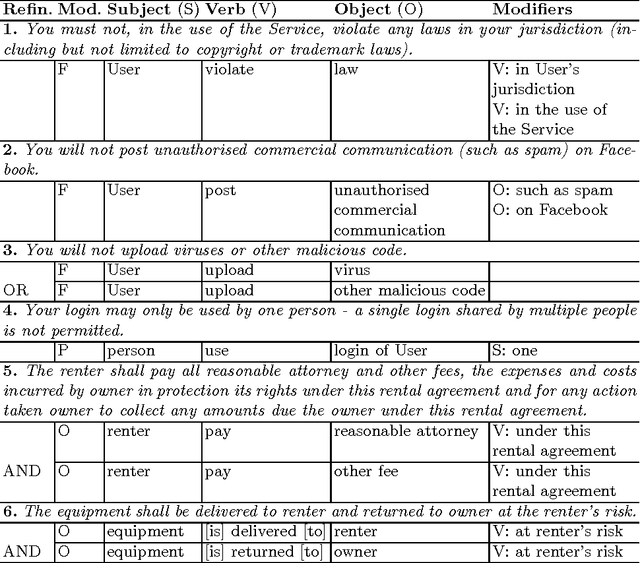John J. Camilleri
A Web-Based Tool for Analysing Normative Documents in English
Jul 13, 2017



Abstract:Our goal is to use formal methods to analyse normative documents written in English, such as privacy policies and service-level agreements. This requires the combination of a number of different elements, including information extraction from natural language, formal languages for model representation, and an interface for property specification and verification. We have worked on a collection of components for this task: a natural language extraction tool, a suitable formalism for representing such documents, an interface for building models in this formalism, and methods for answering queries asked of a given model. In this work, each of these concerns is brought together in a web-based tool, providing a single interface for analysing normative texts in English. Through the use of a running example, we describe each component and demonstrate the workflow established by our tool.
Extracting Formal Models from Normative Texts
Jun 15, 2017

Abstract:We are concerned with the analysis of normative texts - documents based on the deontic notions of obligation, permission, and prohibition. Our goal is to make queries about these notions and verify that a text satisfies certain properties concerning causality of actions and timing constraints. This requires taking the original text and building a representation (model) of it in a formal language, in our case the C-O Diagram formalism. We present an experimental, semi-automatic aid that helps to bridge the gap between a normative text in natural language and its C-O Diagram representation. Our approach consists of using dependency structures obtained from the state-of-the-art Stanford Parser, and applying our own rules and heuristics in order to extract the relevant components. The result is a tabular data structure where each sentence is split into suitable fields, which can then be converted into a C-O Diagram. The process is not fully automatic however, and some post-editing is generally required of the user. We apply our tool and perform experiments on documents from different domains, and report an initial evaluation of the accuracy and feasibility of our approach.
A CNL for Contract-Oriented Diagrams
Jun 22, 2014



Abstract:We present a first step towards a framework for defining and manipulating normative documents or contracts described as Contract-Oriented (C-O) Diagrams. These diagrams provide a visual representation for such texts, giving the possibility to express a signatory's obligations, permissions and prohibitions, with or without timing constraints, as well as the penalties resulting from the non-fulfilment of a contract. This work presents a CNL for verbalising C-O Diagrams, a web-based tool allowing editing in this CNL, and another for visualising and manipulating the diagrams interactively. We then show how these proof-of-concept tools can be used by applying them to a small example.
 Add to Chrome
Add to Chrome Add to Firefox
Add to Firefox Add to Edge
Add to Edge